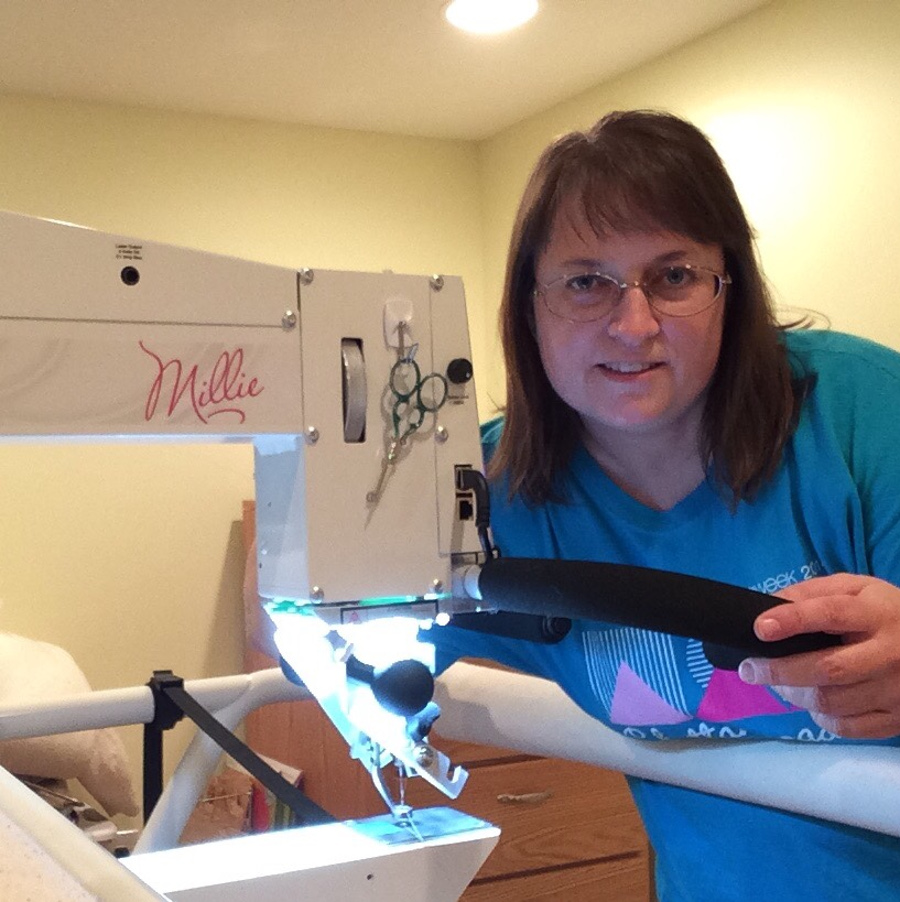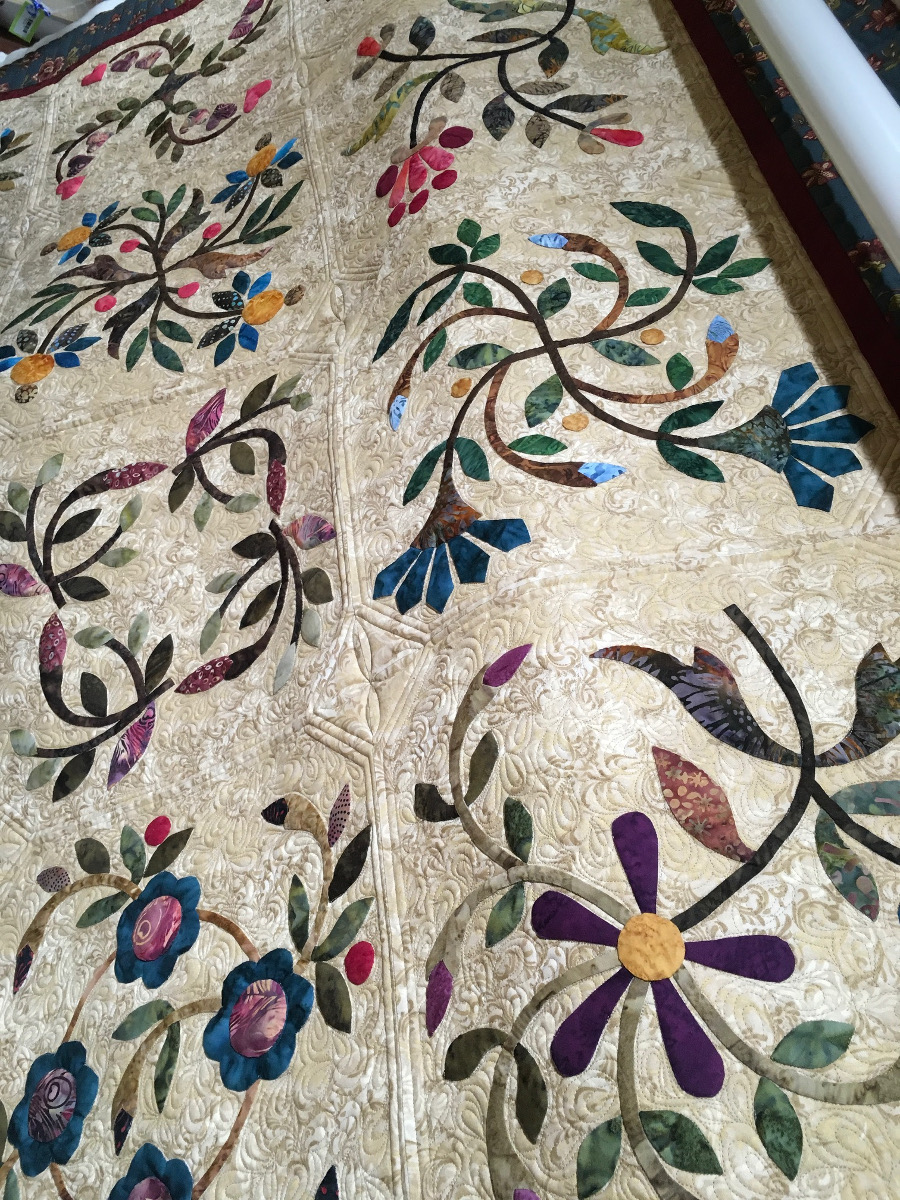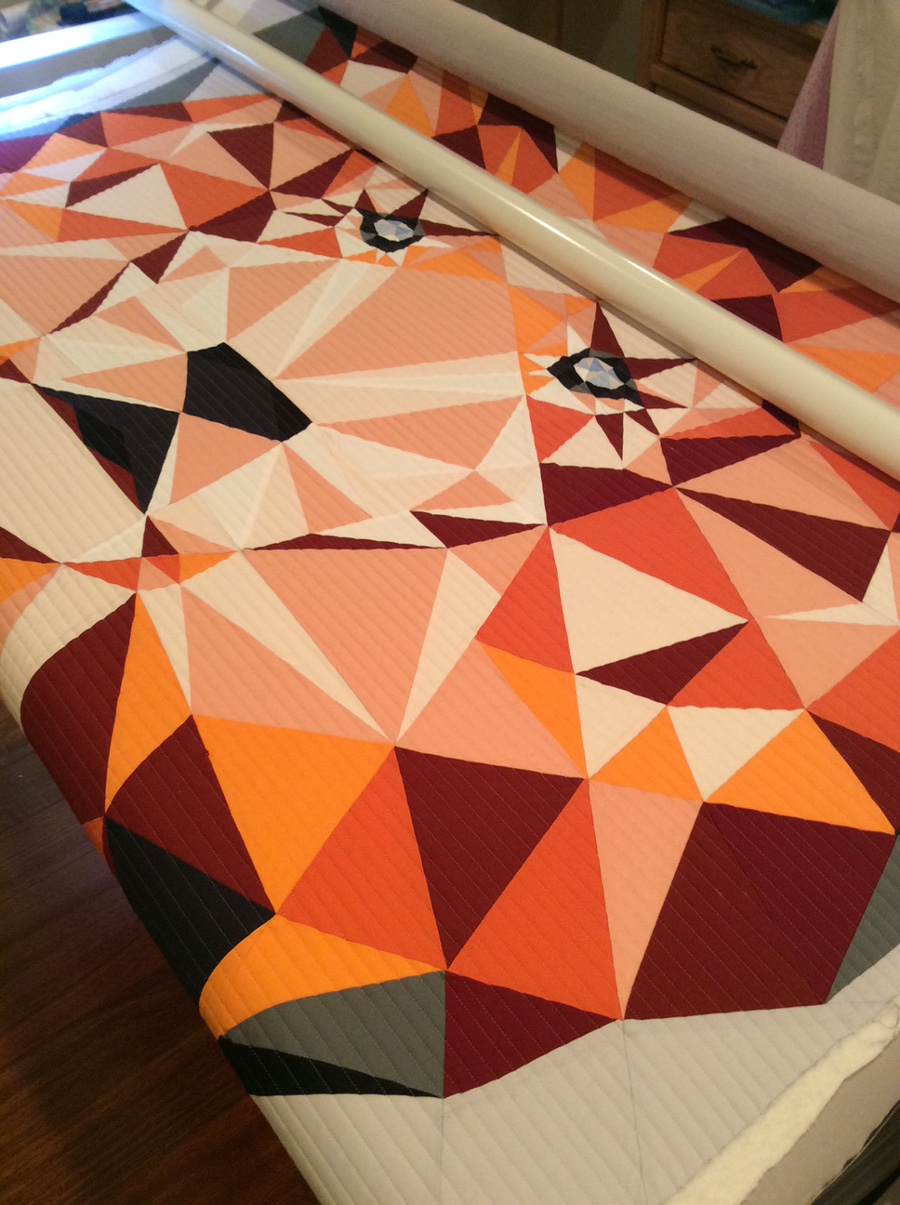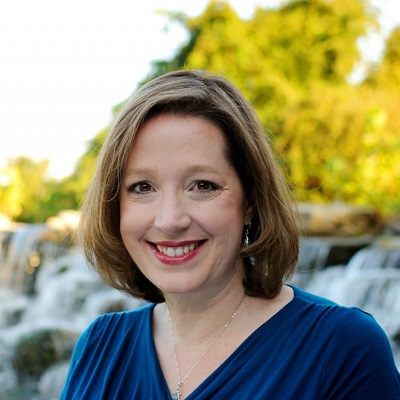Running a longarm quilting business: Q&A with Liz Kodner

Kentucky-resident Liz Kodner has been a proud APQS Millennium owner for three years and decided to make the jump to quilting for hire two years ago. Her favorite thing about operating her business, Maplehurst Quilt Co., is the personal connection she’s able to make with her clients when quilting their tops. We recently asked her a few questions about how she got started and what advice she might have for those considering starting their own small business.
How did you get into quilting for other people?
There’s actually a “how” and a “why” for this question. The “how” is that a LQS owner gave me a chance by asking me to quilt her Lion quilt (Violet Craft). All she wanted was horizontal lines spaced ½ inch apart!
The “why” is more complicated. I am very visually oriented and draw energy from color and design. Getting to work with quilts pieced or appliqued by others gives me the chance to see even more wonderful quilts than I could ever produce myself. I love the variety of tops that come through my door and am amazed at my customers’ creativity!
What types of quilting do you do most often for customers?
I do about 75 percent edge-to-edge quilting and 25 percent custom. My custom work is heavily weighted towards ruler work.


What longarm machine do you use in your business and why did you choose it?
I have an APQS Millennium with a 26-inch throat. I do not have a robotics package – I’m completely hand-guided. I chose the Millie because of its electronic channel locks, and coincidentally my first customer job was all about using that horizontal channel lock. I also quilt for customers on my domestic machine, a Bernina 440, in certain circumstances. These tend to be smaller projects.
What is your favorite batting?
It depends upon the quilt and how it will be used. For throws and wall quilts, I like 80/20 blend; for baby quilts and bed quilts that are not high-end custom jobs, 100 percent cotton; for custom quilts, wool over 80/20 or sometimes 100 percent polyester.
What is your favorite thread?
So Fine #50 by Superior Threads with The Bottom Line in the bobbin.
What is your favorite ruler or gadget right now?
I love all of the rulers from The Quilted Pineapple (Linda Hrcka) – the design possibilities are endless.
What are the top three pantograph patterns that you use for customers?
Becker’s Shooting Star, Nemesh Feather – Grande and Solstice.
What percentage of your customers are local and what percentage mail you quilts?
Right now, my customer base is 100 percent local. I think it’s interesting to see quilts from other areas because there definitely is a difference in style, fabric, etc. so I’m hoping to start mail-based business soon. Even if quilts arrive by mail, I hope to eventually meet the tops’ makers because I view quilting for others as a personal connection as much as a business.


Describe your longarm studio and how you organize your studio.
I am in the finished basement of my house in northern Kentucky. Organization of the physical studio is an ongoing effort. I keep customer quilts in a cubbyhole shelving system. One thing I wish I had more space for was a place to photograph quilts. On the other hand, it’s fun to get out into the community to find the perfect setting to photograph a quilt. For example, I’m writing this in a park that I just discovered that teems with barns, benches, wooden fences and stone walls. I shall be back!
Do you use an accounting software of some sort to keep track of your invoices?
I use a basic invoicing app called Invoice Simple to keep track of my invoices and export data to a spreadsheet for tax, accounting and analytical purposes. My business is completely paperless.
What is the best thing about quilting for others?
I love making a personal connection with my clients. To me, the only thing better than hearing the story behind the project is seeing photos of it in use. I think about the person who will be receiving the quilt while I’m quilting the top and try to add just a little extra love as I’m quilting.


What is the biggest downside about quilting for others?
Quilting for others makes it difficult to take time for personal creativity, so I literally schedule my creative time as if I were a customer.
What advice would you give to someone who is thinking of starting a longarm business?
Jump in, take classes and don’t be afraid to try new things! The more you learn and practice, the easier everything gets.
What do you wish you’d known when you started your business?
I enjoyed using my longarm from the first moment I set it up, but I had no idea how joyful and passionate I would become about my quilting. I wish I’d known this earlier so I could buy my machine years sooner!
Liz Kodner lives in Crestwood, Kentucky and can be found at www.maplehurstquiltco.com and on Instagram at @lizkodner.







